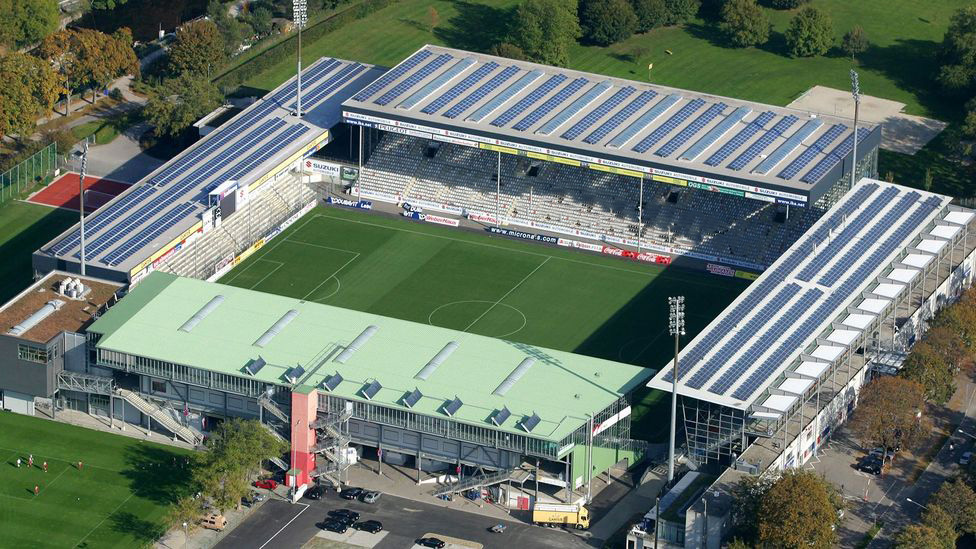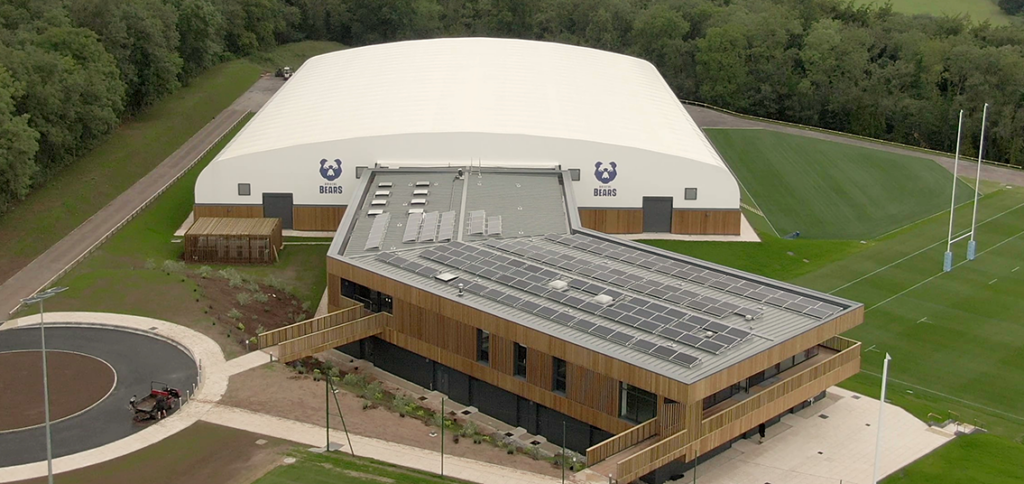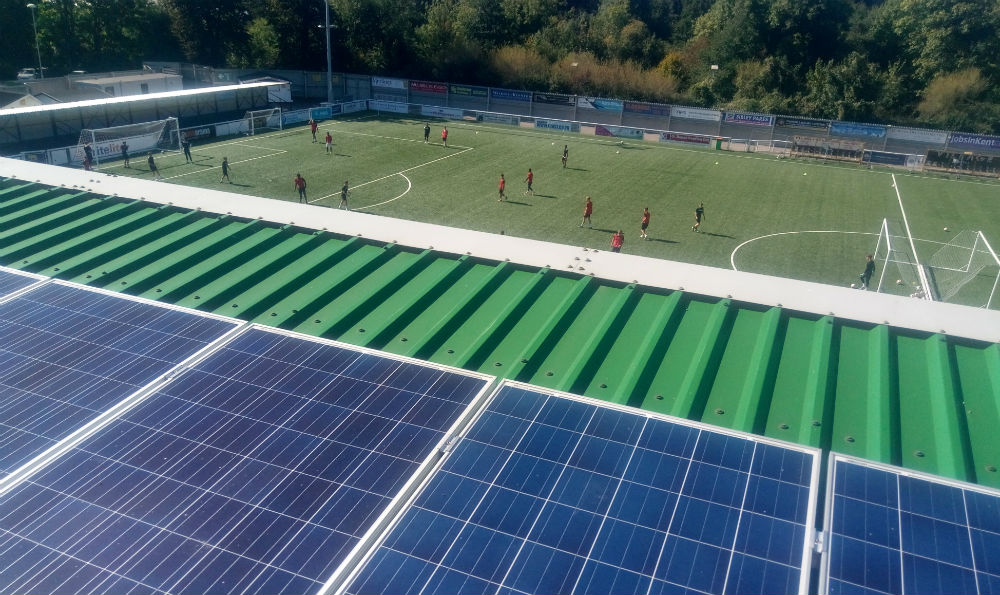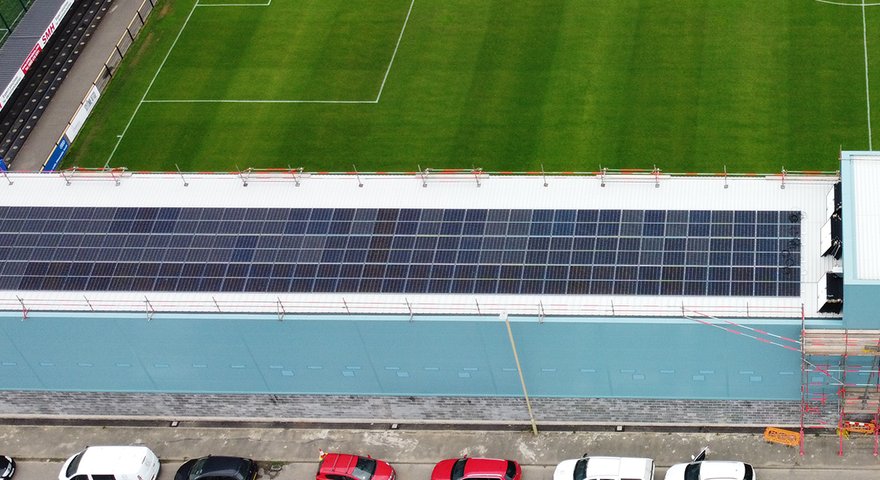Back in 1993 SC Freiberg were the first reported club to install solar panels on their roof. But now nearly 30 years on and with energy prices rising – is it time for a new focus on solar energy in sport?
Mounting solar panels on or nearby stadiums is not the only way for venues to make themselves more sustainable.
As a result of a Power Purchase Agreement (PPA) with English investor giant Octopus Energy, Arsenal has become the first team in the Premier League to be 100% sustainable in their energy consumption.
By completely sourcing its energy from renewable sources, the Gunners will manage to save 2.32 million kg of carbon dioxide per year, which translates to the equivalent weight of a 183 double-decker buses, or the annual CO2 emissions of 580 fans.
Where can you find solar stadiums?
Latin America has long been a region with outstanding solar conditions although some countries make use of these assets more than others. Chile is known for having the most developed solar market in the region, however, when it comes to solar venues this title goes to Brazil.
The largest American solar venue, which also holds the title for the largest solar venue globally, is the Indianapolis Motor Speedway which hosts the Indie 500. The venue is powered by nearly 40,000 solar panels.
The aim of venue solar projects would not only save millions in energy costs and cut carbon emissions but may spearhead work in the residential sector. Fans are exposed to the great qualities of this technology through watching their favourite teams.

What can solar energy do?
Imagine a stadium. A massive building, requiring excessive amounts of energy. Everything, from the stadium lights to the hot dog stands, slurps up electricity. And then there are offices, function rooms, training facilities and sports grounds infrastructure.
Excellent opportunities for solar applications abound.
The cost of installing and operating solar panels have dropped so sharply that the economic benefits significantly outweigh the costs.
One of the main drivers for the integration of solar energy into European stadium infrastructure, was when FIFA started the “Green Goal” program.
It was created in 2003 but its first debut was not until the 2006 FIFA World Cup in Germany.
On the World Cup stage
Solar has increasingly been part of the World Cup landscape. During the 2014 World Cup in Brazil, 5 out of the 12 venues were solar-powered stadiums.
However, this was followed up by zero solar stadiums for the 2018 FIFA World Cup in Russia, as none of the Russian stadiums make use of renewables for their power supply.
Qatar have made better efforts for this year’s World Cup.
Despite several stadiums being built as temporary structures with the contents transported to other venues after the event, they are also testing out solar pavements.
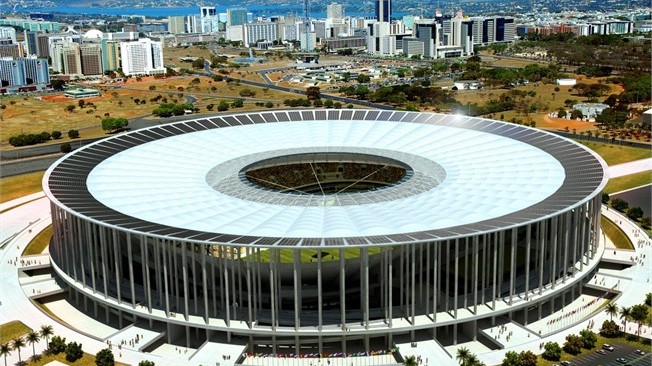
Moving back across the Atlantic to Amsterdam and Ajax might play in red and white, but their stadium is proudly green.
The innovative Johann Cruyff Arena runs on solar power, with energy captured by 4,200 solar panels and stored in 148 electric car batteries. During games, this energy is used to power the stadium. At other times, it can contribute power to the national grid: the batteries store enough electricity to supply 7,000 homes for an hour.
Borussia Dortmund Q-Cells, one of the world’s largest manufacturers of solar energy products, installed panels to the roof of the Bundesliga champions’ 80,720 capacity home Signal Iduna Park.
This follows similar deals between rivals Bayern Munich and Chinese firm Yingli Solar, and the commitment of Chaori Solar – another Chinese company – to FC Schalke 04.
Closer to home
In the UK, you have to go down to the lower tiers to find the clubs that are leading the field for sustainability, even though budgets are much tighter outside the Premier League.
In 2016, Bristol City renovated their stadium Ashton Gate and installed 460 solar panels on the roof: a move that was predicted to reduce the club’s carbon emissions by 20%, as well as cutting its energy costs by £150,000 over 20 years.
But it is League Two promotion chasers Forest Green Rovers who have been described as “the greenest club in the world” by football governing body FIFA.

They are living up to their reputation with bold plans to build a new wooden arena, which they say will be “the greenest stadium in the world”.
This is the latest step towards sustainability by the Gloucestershire club, owned by renewable energy entrepreneur Dale Vince. It claims to be 100% powered by renewable energy, some of which is generated by the 170 solar panels on the stadium roof.
The entire club is powered by 100% green energy electricity and carbon neutral gas from Ecotricity, some of which we generate ourselves with the solar panels on our stadium roof and the solar tracker at the ground entrance.
The grass they play on is sustainable, free from pesticides and herbicides, they cut the grass with a GPS-directed electric lawnmower.
Forest Green collect rainwater from beneath the pitch to use for pitch irrigation and have Electric vehicle (EV) charging points.
They are simply run from the sun.
Is it time for you to look into solar at your stadium?
Remember, the Solar In Sport team are here for you every step of your solar journey.
Get in touch with our team today on (+44) 01782 953719.
Or why not fill in our simple contact form.
We look forward to helping you on your solar journey!

